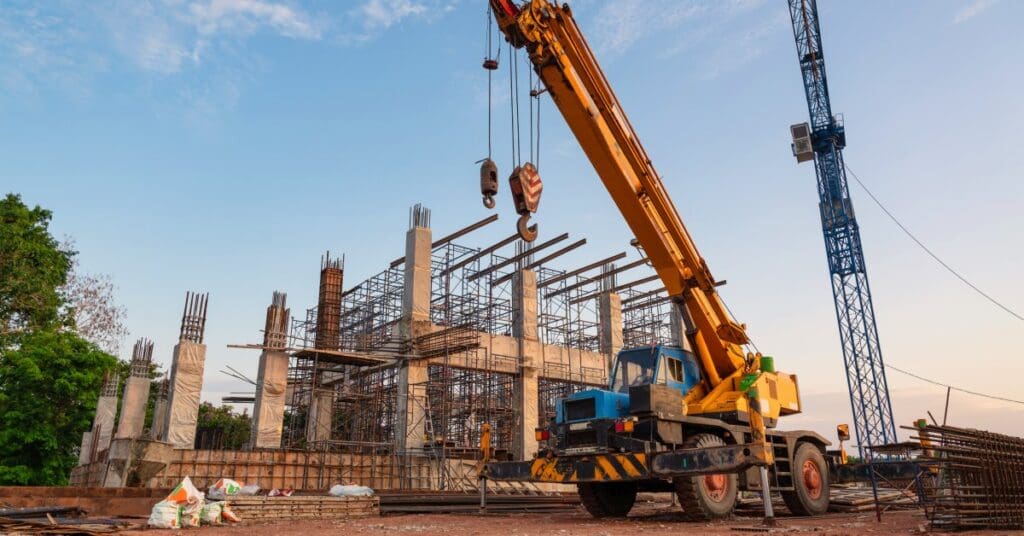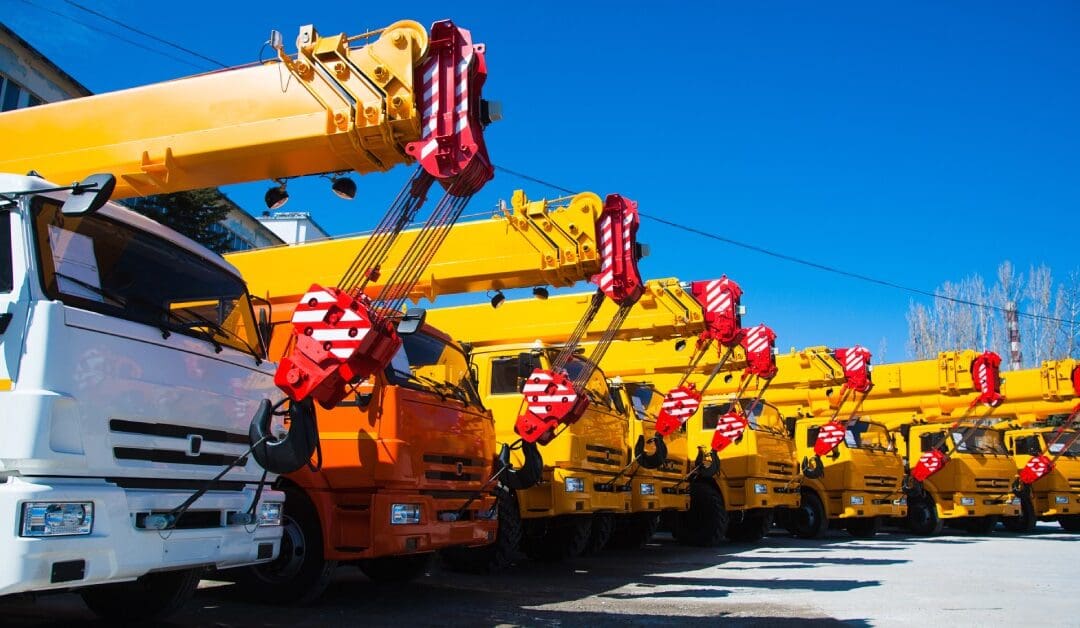Mobile cranes are versatile machines that have become essential tools in the construction industry, enabling workers to lift and move heavy objects with remarkable ease and efficiency. Throughout the history of mobile crane rigging, these machines have undergone significant developments and evolved into the powerful equipment of today. Believe it or not, they’ve been in use for hundreds of years. Read on to learn about their unusual evolution.
The Origins
You might be surprised to learn that mobile cranes have a rich history that spans centuries, dating back to the ancient civilizations of Greece and Rome. Early engineers, motivated by the pressing need to manage heavy materials more efficiently in construction and warfare, recognized just how much help they needed.
This recognition helped them start crane technology, a remarkable innovation that transformed the way humans interacted with their environment. These ingenious machines laid the groundwork for the lifting solutions of today, evolving into sophisticated pieces of equipment vital to modern engineering and construction.
Military Operations
During this time, cranes were primarily a part of military operations, helping with the construction of fortifications. The ability to lift heavy materials like stone and timber was crucial in building walls and towers that could withstand sieges. Additionally, cranes played a vital role in large-scale construction projects, helping to erect monumental structures. From impressive temples that honored their deities to grand amphitheaters, these structures were testaments to the ingenuity and creativity of their builders.
Ancient Greeks
The first recorded use of a crane on wheels goes back to the ancient Greeks in the 6th century BC. These larger, mobile versions allowed for greater flexibility and efficiency in lifting. This innovation made it much easier for builders to transport heavy materials more easily across construction sites, further advancing their engineering capabilities. Additionally, because they could move cranes as needed, building projects could proceed with greater speed, revolutionizing construction in the ancient world.

Remarkable Architecture
The ancient Greeks skillfully employed these cranes to lift heavy stones and building materials for their remarkable architectural structures. These included grand temples dedicated to their gods, amphitheaters, and stadiums. The use of cranes demonstrated advanced engineering techniques for their time, showcasing the ancient Greeks’ deep understanding of mechanics and physics.
The Middle Ages
Fast forward to the Middle Ages, and we see the wooden treadwheel cranes of medieval Europe. These cranes, typically made from timber, were a common sight at construction sites where they were used to elevate materials for constructing everything from castles to cathedrals.
The design of these cranes was ingenious: many of the devices of this time used a treadwheel that humans or animals would push, making it much easier to lift great weights that previous civilizations were unable to move. This new power made it much easier to construct many of the impressive structures that define European architecture today.
19th Century
The landscape of construction began to change dramatically in the 19th century with the advent of steam-powered mobile cranes. This technological advancement revolutionized the construction industry, as these cranes came with increased lifting capacity and enhanced movement capabilities.
With steam power driving their operation, cranes could lift heavier loads and transport them to different sites easier than ever before. This innovation marked a significant turning point in construction practices since people could use machines to perform tasks, which greatly reduced the need for manual labor. Job sites across the globe changed, leading to faster construction times and the ability to tackle more ambitious projects than ever before.
Early 20th Century
The early 20th century saw noteworthy developments in mobile crane technology, primarily driven by the invention of the internal combustion engine. This groundbreaking advancement revolutionized the industry, allowing cranes to operate independently of external power sources, which significantly enhanced their versatility.
As a result, mobile cranes became suitable for a wider range of applications, enabling deployment in various environments without the constraints of fixed power sources. Independence here marked a pivotal shift in the workflow of construction projects, making it easier to tackle tasks in previously challenging locations.
Hydraulic Systems
In the 1940s, hydraulic systems became the norm, providing mobile cranes with better control and precision. This innovation allowed operators to handle loads with greater finesse, enhancing safety and efficiency on job sites.
With the hydraulic mechanisms in place, operators could manage heavy loads with pinpoint accuracy, drastically reducing the risk of accidents and mishaps that were commonplace in the past. This leap forward in technology marked a significant boost in construction safety standards, making construction sites much safer.
Post–World War II
The post–World War II era saw a thrilling surge of innovation in mobile crane technology, characterized by new machinery such as telescopic booms and crawler tracks. These features made it easier for cranes to extend their reach significantly, enabling them to operate in tight spaces and navigate challenging terrain with ease.
Construction teams could now work in previously inaccessible locations. The ability to adapt to diverse site conditions greatly improved efficiency while also opening up new possibilities for new architecture and urban development.
Expanded Applications
These advancements improved lifting capacities and also expanded the range of applications for mobile cranes. They became indispensable for projects in urban settings, where space was limited and maneuverability was essential, as well as in remote locations where traditional lifting methods were inadequate. Their versatility made it much easier for mobile cranes to meet the challenges of different construction sites, making them an essential tool for modern builders and engineers.

Modern Architecture
As modern architecture continued to evolve in the latter half of the 20th century, so did mobile cranes. The ever-growing demand for taller buildings and more complex structures meant that people needed cranes that could adapt to new challenges and specifications. Engineers and designers began to push the limits of what cranes could achieve, creating newer and more innovative designs that were previously unimaginable. This period of rapid development saw cranes with advanced features, such as automated controls and improved stability systems, ensuring they could handle every challenge that came with modern construction.
From ancient civilizations to modern-day construction sites, mobile cranes have come a long way. The history of mobile cranes and rigging is interesting, and they continue to play a crucial role in making complex and challenging lifting tasks possible, transforming the landscape of construction. Cranes are now a vital part of big builds, and if you need a Louisiana crane service to help with your projects, then you need Heave Ho! Crane & Rigging. Our technology and industrial expertise will give your next construction project the big lift it deserves.

